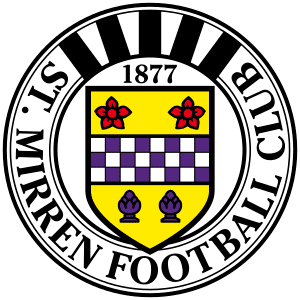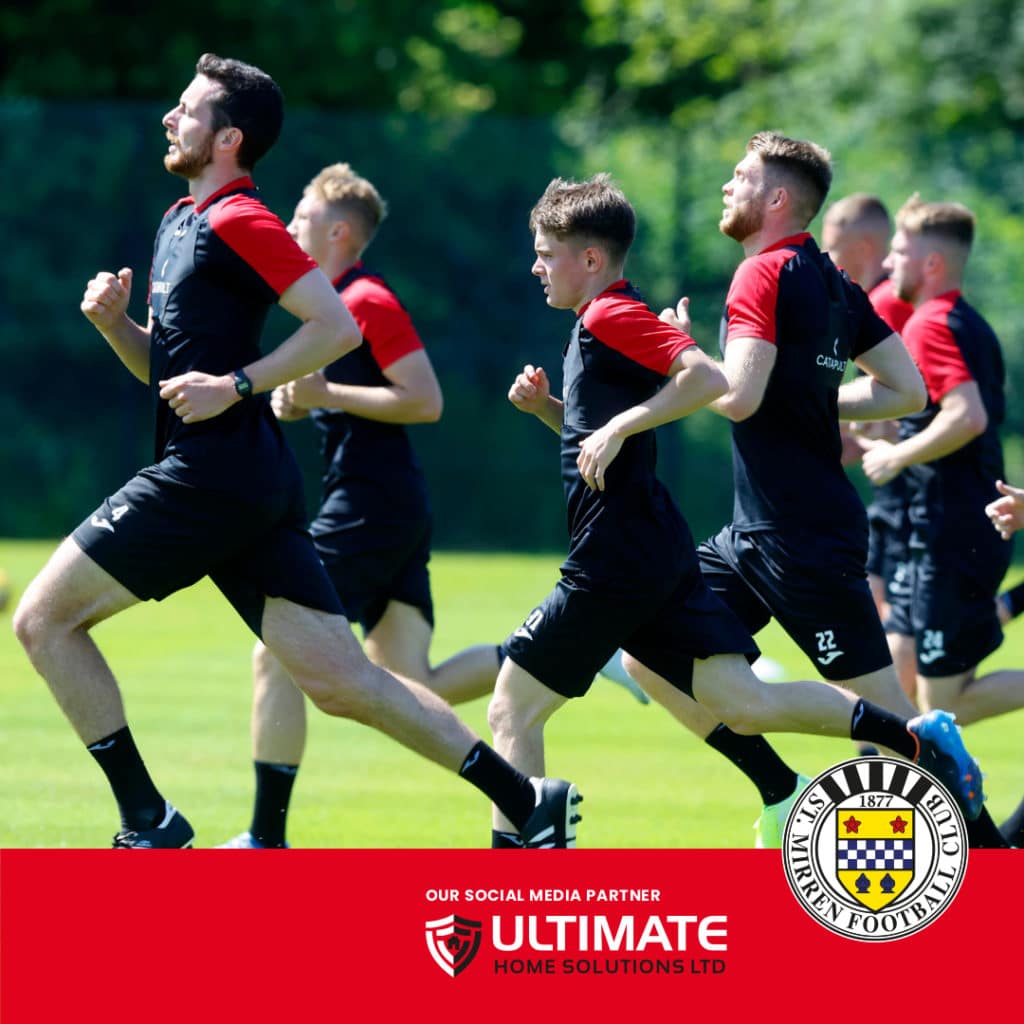St Mirren FC Tryouts
St Mirren FC is a Scottish professional football club based in Paisley, Renfrewshire. The club currently plays in the Scottish Premiership, the country’s highest football league in Scotland.

St Mirren FC Youth Development System
The St Mirren Youth Academy is the only Youth Academy in Scotland, outwith Celtic and Rangers, to reach a 5 Star Elite rating from the Scottish FA.The criteria based system requires that the Academy reaches certain standards in a range of different areas, from medical facilities, coach qualifications and technical/tactical development plans.

With teams ranging from Under 8s to Under 10s in the Junior Academy, to teams from U11 to U20s in the Pro Academy, more than 100 youngsters are part of the St Mirren family.
St Mirren FC Recruitment Trials
St Mirren Football Club does not hold open trials for players wishing to be part of the Academy. We have an extensive scouting network which allows us to cover games and tournaments across the West of Scotland, which is our main source of recruiting young players with outstanding ability.
Should anyone wish to be considered for a trial, the following procedure applies.
Players between the age of six and 18 years are asked to complete the recommendation form which can access via a link found on the club’s official website by clicking here.
The recruitment staff will assess the details and make a decision as to whether or not a scout will be sent to watch the games.
If the scout feels that the player has shown potential to play at Academy level, an approach will be made to the manager of the club as well as the player’s parents and the individual concerned will be invited in for a trial with St Mirren FC.
The trial will consist of the player training and playing with the current registered players in the relevant age group, closely monitored by the Academy staff.
A decision will be made within this period whether the player would be asked to sign a contract with St Mirren or whether he would stay with his current club, where he would be monitored by our Scouting Network.
If someone does not receive a reply within 28 days, please assume their request for a trial with St Mirren Football Club has been unsuccessful.

EXPLORE MORE CLUBS!
Explore more professional clubs by continent.
St Mirren FC History
The second half of the 19th century saw the establishment of St. Mirren as a gentlemen’s club that participated in a variety of sports, including cricket and rugby, among others. The founders of the football club ultimately opted to play association football in 1877, making that year the formal founding year of the football club, thanks to the growing popularity of football at the time. They take their name from Saint Mirin, who is both the patron saint of Paisley and the founder of a church that was located on the current location of Paisley Abbey. St. Mirren Street is the name of one of the streets in the city of Paisley.
The club’s first uniform consisted of scarlet and blue stripes, but they switched to their current black and white striped shirts after just one season. Since then, they have worn black and white striped shirts every season, with the exception of one season in the 1900s when cream tops were worn.
A table displaying the standings of St. Mirren throughout the years.
On October 6, 1877, St. Mirren played their first game and won their debut by a score of 1-0 over Johnstone Britannia at Shortroods. After those two years, the team relocated to a new pitch in the area known as Thistle Park at Greenhills. On September 4, 1880, St. Mirren played their first Scottish Cup match, which they won by a score of 3-0 against Johnstone Athletic. The Buddies played in their first cup final the next year, which was the Renfrewshire Cup, although they were defeated by Thornliebank by a score of 3-1. In 1883, however, the Saints beat Thornliebank 3–1 to win the Renfrewshire Cup. This victory marked a reversal of the previous year’s results. They relocated to their third home in 1883, which was located in West March (early maps list the region as West March rather than the usually used Westmarch), and they won their first game at their new location, which was against Queen’s Park. Morton was the opponent for St. Mirren’s first ever game, which took place in 1885 and ended in a loss.
The 1890 season was an important one for St. Mirren since it was the year that they joined the Scottish Football League as one of the founding members, along with their neighboring Paisley team Abercorn. Only five of the original eleven clubs are still active under the current league structure. This year, St. Mirren played one of the earliest night games using oil lamps at Cappielow, which was a match against Morton. The game was one of the first to be played at night.
In 1894, St. Mirren relocated to Love Street, and in the 1907–08 season, they played in their first Scottish Cup final. However, they were crushed by Celtic 5–1 in the final. The Buddies would go on to win the championship three more times, in 1926, 1959, and 1987.
A cigarette card that was printed in 1909 and features Robert Robertson, an active player for St. Mirren at the time
St. Mirren was given an invitation to participate in the Barcelona Cup invitational competition that was held in 1922 to commemorate the opening of Les Corts, which was Barcelona’s stadium at the time. They prevailed in the tournament’s championship match against Notts County and took first place.
In the 1979–1980 season, St. Mirren finished in third place in the top division, behind behind Aberdeen and Celtic. This was the club’s highest-ever finish in the top level. During that same season, Saints also won the Anglo-Scottish Cup, becoming the first and only Scottish club to do so. They did so by prevailing against Bristol City in a two-legged final. The year after that, St. Mirren made their debut in European play, and they began by defeating IF Elfsborg in Sweden by a score of 2–1 in the first leg of their matchup. The second leg of the match ended in a scoreless tie. In the following round, they competed against the French team Saint-Étienne. Despite the fact that St. Mirren’s home leg ended in a 0–0 draw, Saint-Étienne was able to pull off a 2–0 victory in the second leg to eliminate St. Mirren from the cup competition.
The club was demoted from the Scottish Premier League three times (1900–01, 2014–15, and 1991–92), but they were spared relegation from the Scottish Football League’s Premier Division in 1991 due to league re-construction. The club was demoted from the Scottish Premier League in 2000–01 and again in 2014–15. Despite only dropping one of their final seven matches, the St. Mirren Saints finished last in the Premier League standings in the 2001 season. However, the Saints were able to earn promotion after winning the First Division championship in the 2005–2006 season. This was the same year that St. Mirren also won the Scottish Challenge Cup. The final was played at the Shyberry Excelsior Stadium, which is the home field of Airdrie United. Simon Lappin and John Sutton scored for the Saints in the match against Hamilton Academical.
Despite having a two-man advantage, they were defeated by Rangers in the final of the Scottish League Cup in 2010, despite the fact that they had advanced to the final.
However, three days later, they secured a famous victory over Celtic in a match that The Buddies won 4–0 with doubles from Andy Dorman and Steven Thomson. The match took place three days after the legendary victory. In March of 2013, St. Mirren defeated Heart of Midlothian 3–2 at Hampden to win the Scottish League Cup. This victory marked the first cup victory for St. Mirren since 1987.
In the 2010s, the club received praise for their youth development, bringing through several players from their academy (despite it not being listed among the ‘elite’ group assessed by the SFA in 2017). These players included Stevie Mallan, Jack Baird, Kyle Magennis, Jason Naismith, Kyle McAllister, Sean Kelly, and full Scotland internationals Kenny McLean, Lewis Morgan, and John McGinn.
St Mirren FC Stadium
The team first met with representatives from Aldi and Lidl on January 15, 2003, to discuss the possibility of building a new stadium. The club was interested in selling their Love Street ground so that it might be developed for retail use. The purchase of the new stadium might be made possible with the proceeds from the sale of Love Street. Following the approval of the club’s planning proposals for a retail development at Love Street on May 24, 2005, the club subsequently sold the ground to Tesco on April 25, 2007, for the sum of fifteen million pounds. The land for the new stadium was first broken up for construction on January 7, 2008, and it was finally opened to the public on January 31, 2009, at a total cost of eight million pounds. In order to mark the opening of the new stadium, there was a procession that went from Love Street all the way up to Greenhill Road before the first game that was played there. The club chairman, Stewart Gilmour, as well as the First Minister of Scotland, Alex Salmond, were both in attendance for the inaugural match at the new stadium. In order to mark the occasion of the opening, a plaque was unveiled by Alex Salmond before the game. The match between St. Mirren and Kilmarnock ended in a 1–1 tie, with Kevin Kyle of Kilmarnock scoring the first goal ever scored at the new stadium that St. Mirren was playing in. Dennis Wyness scored the first goal for St. Mirren at the new stadium while they were playing in the same match. The opening match set the record attendance with 7,542 supporters in attendance, which wasn’t surpassed until the Scottish Premiership play-off match against Dundee United on May 26, 2019, when 7,732 fans were in attendance. Additionally, the Scotland national under-21 football team now calls St. Mirren Park their permanent home field for their matches.
In November 2015, St. Mirren reached an agreement with Renfrewshire Council to rename the stadium the Paisley 2021 Stadium in exchange for a two-year sponsorship arrangement from the council.
This was done in an effort to publicize Paisley’s candidacy for the title of UK City of Culture in 2021. As part of a sponsorship agreement with an information technology company based in Glasgow known as Simple Digital Solutions, the stadium was rebranded as The Simple Digital Arena in June of 2018.
The name of the venue was changed to The SMISA Stadium in November 2020, in honor of the St. Mirren Independent Supporters Association. This gesture is meant to commemorate the fact that the upcoming season will be the last one before the majority of the club is sold to its supporters in 2021. [2]






